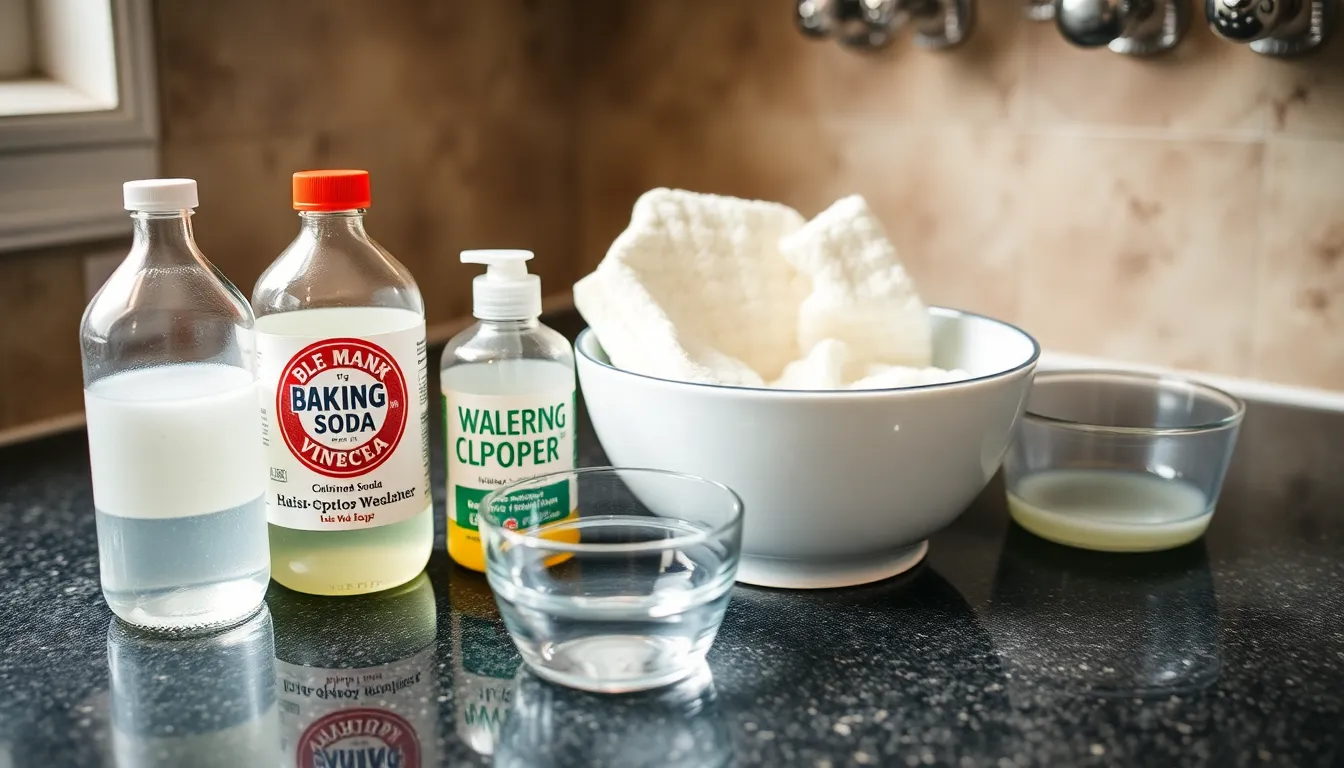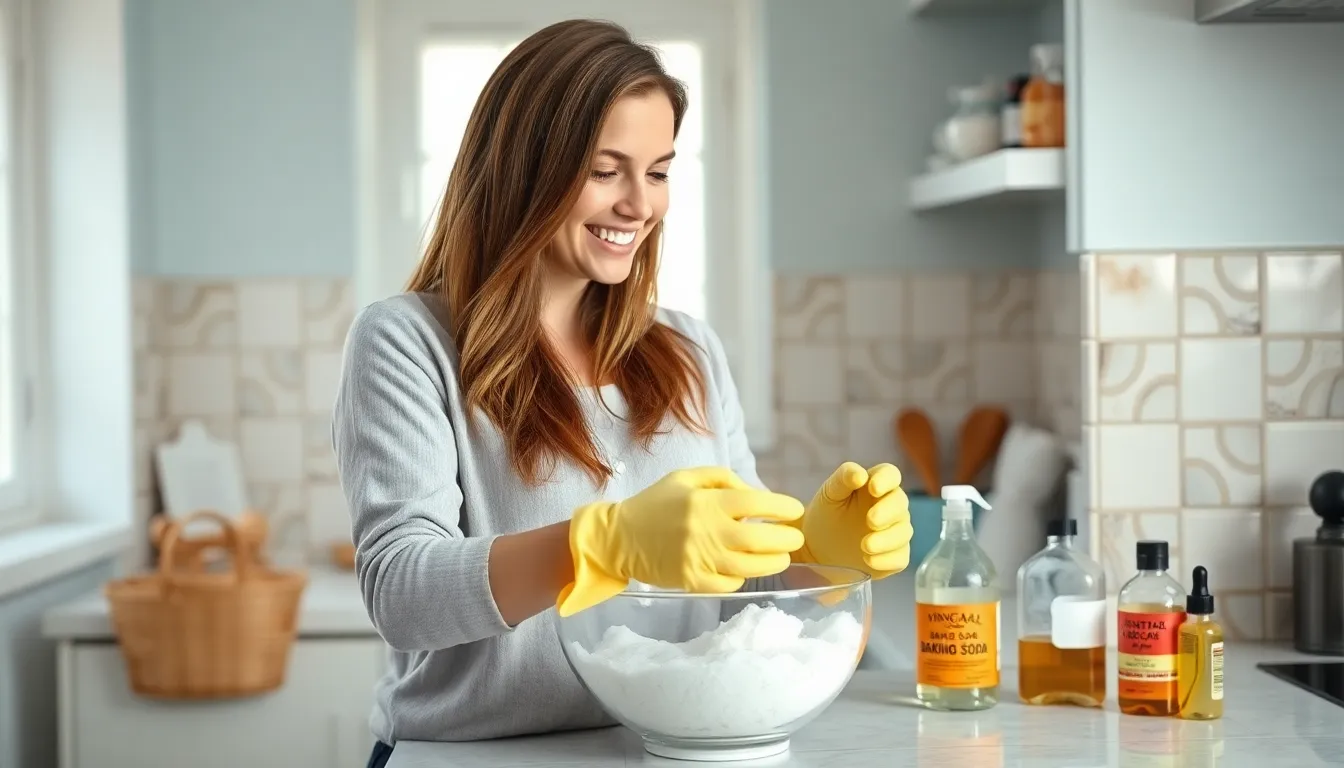Ever stared at those stubborn stains on your tiles and thought they were auditioning for a horror movie? You’re not alone. Many dread the daunting task of tile cleaning, especially when it comes to tackling the infamous neomanclotise. But what if there’s a way to banish those pesky marks without breaking the bank or your back?
Table of Contents
ToggleUnderstanding Neomanclotise Remover
Neomanclotise remover effectively tackles stubborn stains on tiles. This solution provides a practical approach to an all-too-common cleaning challenge.
What Is Neomanclotise?
Neomanclotise refers to a specific type of stain that appears on tile surfaces, often resulting from environmental factors and substances. Sources of these stains range from spilled food and beverages to dirt accumulation. Each culprit contributes to a tough layer that becomes difficult to manage. Identifying neomanclotise is crucial to selecting the appropriate removal strategy.
Importance of Removing Neomanclotise from Tiles
Removing neomanclotise from tiles maintains not only the aesthetic appeal but also the integrity of the surface. Regular cleaning prevents damage that can occur from staining agents. Ignoring these stains leads to long-term discoloration and potential degradation of tile materials. Prioritizing neomanclotise removal also ensures a healthier environment, as unclean tiles can harbor bacteria and allergens. Maintaining clean tiles reflects a commitment to home hygiene and overall well-being.
Ingredients Needed for Neomanclotise Remover

Creating an effective neomanclotise remover requires a few essential ingredients, many of which can be found around the home.
Common Household Ingredients
Vinegar serves as a natural antibacterial agent, effectively breaking down stains. Baking soda acts as a gentle abrasive that helps lift grime without scratching tiles. Dish soap contributes added cleaning power, cutting through grease and residue. Warm water dilutes the mixture, enhancing its effectiveness. Combining these four ingredients creates a basic yet potent formula.
Optional Ingredients for Enhanced Effectiveness
Essential oils can provide additional antibacterial benefits and pleasant scents, improving the overall cleaning experience. Hydrogen peroxide serves as a powerful stain remover, particularly effective on tougher stains. Cornstarch works to absorb moisture and aid in lifting stains from surfaces. Citrus juices add natural acidity, boosting cleaning capabilities while leaving a fresh aroma. Using these optional ingredients enhances the cleaning process, ensuring it addresses stubborn neomanclotise effectively.
Step-by-Step Guide on How to Make Neomanclotise Remover for Tiles
Making a homemade neomanclotise remover requires simple ingredients and straightforward steps. This guide outlines the process clearly.
Preparing the Ingredients
Gather essential ingredients for the cleaner first. Vinegar provides natural antibacterial properties. Baking soda serves as a gentle abrasive. Dish soap helps cut through grease. Warm water enhances the mixture’s overall effectiveness. Optional ingredients can include hydrogen peroxide for tougher stains, cornstarch to absorb excess moisture, and essential oils for pleasant scents. Citrus juices also add extra cleaning power. It’s important to measure these components precisely to ensure optimal effectiveness.
Mixing the Remover
Mix the ingredients in a large bowl or bucket. Combine one cup of vinegar and one cup of warm water as the base. Add a quarter cup of dish soap to cut through grease. Slowly incorporate half a cup of baking soda into the mixture, stirring gently to avoid causing it to fizz excessively. If using optional ingredients, include them now. For tougher stains, add a small amount of hydrogen peroxide. Achieving a well-blended, creamy consistency creates an effective cleaner.
Safety Precautions to Consider
Exercise caution when handling cleaning ingredients. Use gloves to protect skin from irritation. Ensure the workspace is well-ventilated to avoid strong odors from vinegar and essential oils. Avoid mixing vinegar with strong acids or bleach; this combination releases toxic gases. Keep cleaning solutions stored safely away from children and pets. Checking for any allergic reactions to specific ingredients in advance can also be beneficial. Following these precautions enhances safety during the cleaning process.
Applying Neomanclotise Remover on Tiles
Applying the neomanclotise remover on tiles requires a systematic approach for optimal results. Begin by testing the solution on a small, inconspicuous area to ensure no adverse reactions occur.
Best Practices for Application
Start with a clean surface before applying the remover. Avoid unnecessary clutter on the tiles to facilitate efficient cleaning. Use a spray bottle or cloth to distribute the cleaner evenly across stained areas. Allow the solution to sit for 5 to 10 minutes, which enhances its effectiveness. Once the time elapses, scrub gently with a soft-bristle brush to avoid damaging the tile surface. Rinse thoroughly with water to remove any residue.
Tips for Effective Cleaning
Use gentle pressure when scrubbing to prevent damage to the tiles. Select a specific day dedicated to cleaning tasks, ensuring consistency over time. Wear gloves during the application process to protect the skin from irritation. Consider implementing a routine maintenance schedule to minimize neomanclotise buildup in the future. Always ensure proper ventilation during use to disperse any fumes from the cleaning solution.
Creating a homemade neomanclotise remover for tiles not only simplifies the cleaning process but also ensures a healthier living environment. By using common household ingredients like vinegar and baking soda, anyone can effectively tackle these stubborn stains without resorting to harsh chemicals. The step-by-step guide provided makes it easy to follow and implement.
Regular maintenance and a proactive cleaning schedule can further minimize the buildup of neomanclotise stains. With the right approach and a little effort, maintaining the beauty and integrity of tiles becomes a manageable task. Embracing these cleaning strategies will lead to a fresher home and a more enjoyable living space.




